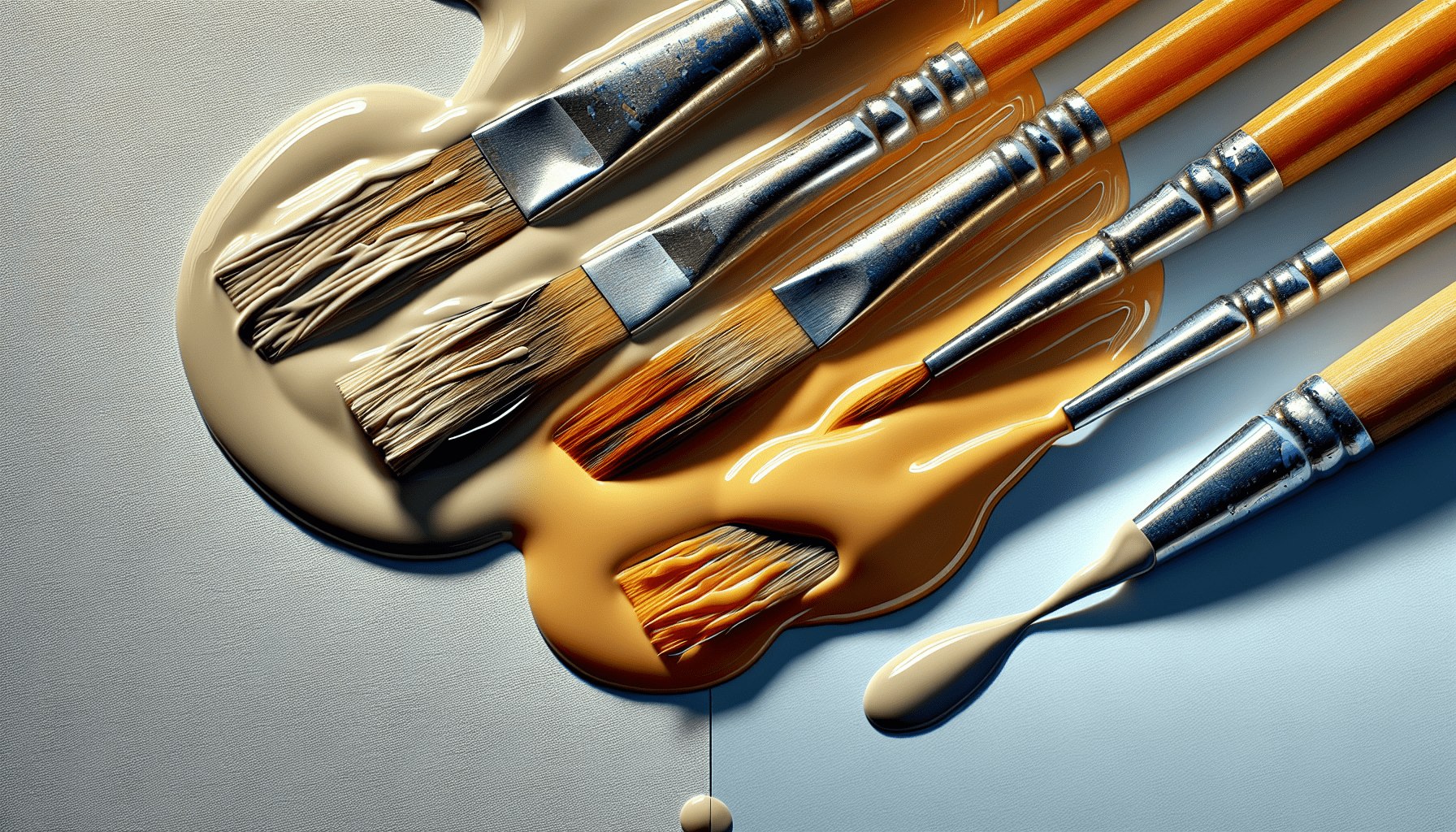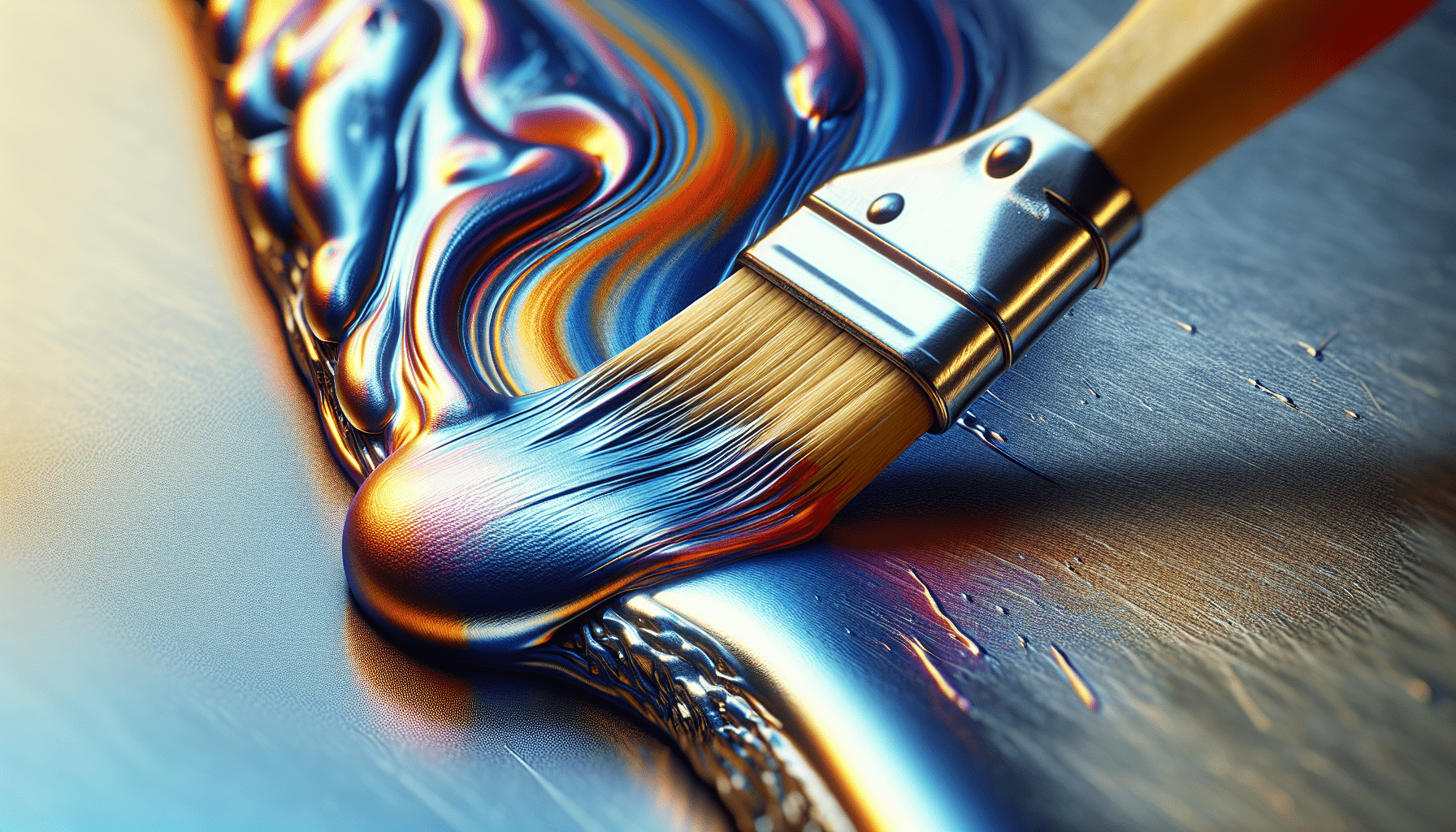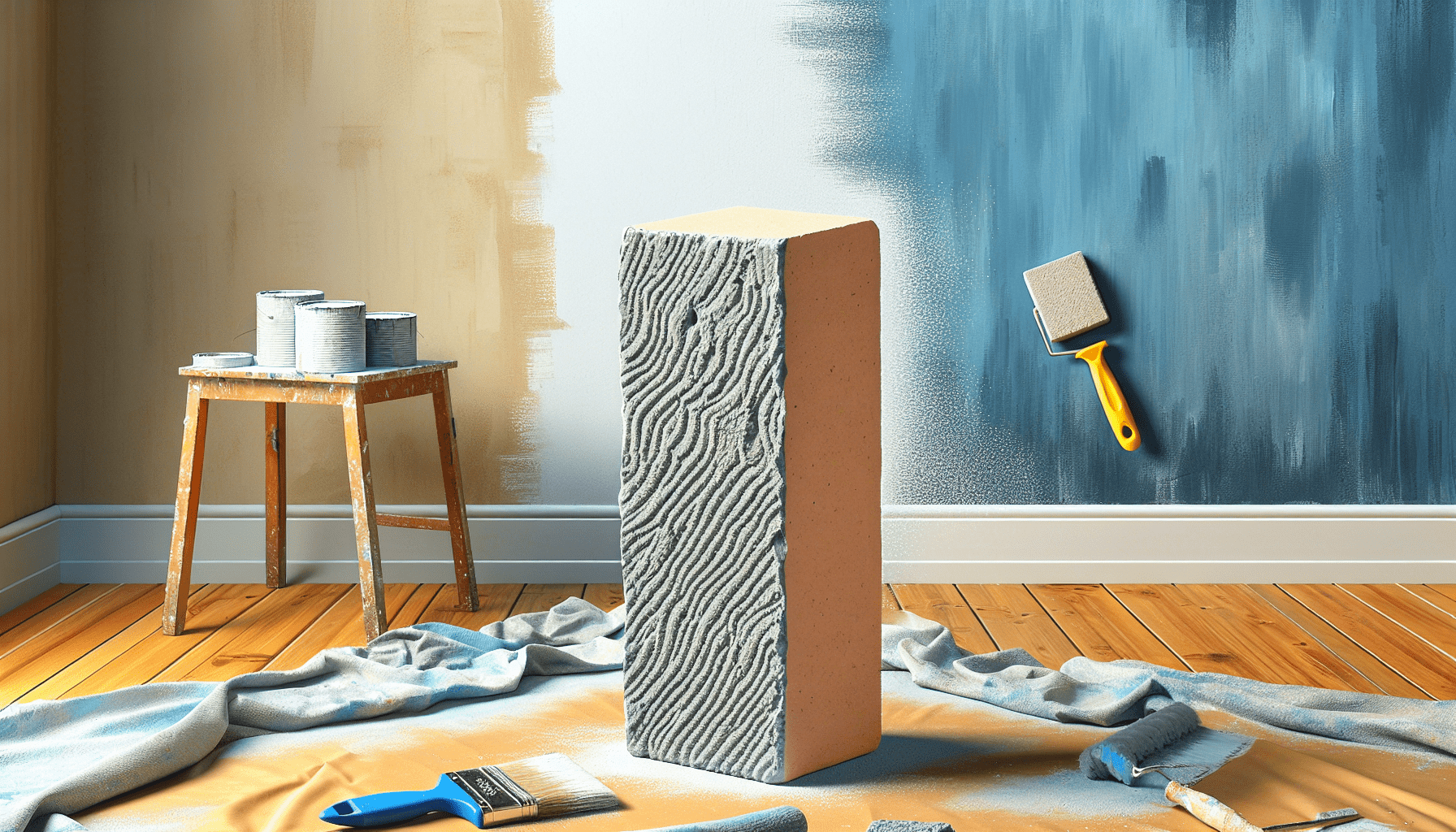Decorative chips have gained immense popularity when it comes to adding texture and color to various surfaces. But, what about incorporating them into latex paint? Have you ever wondered if it’s possible? In this article, we will explore the feasibility of mixing decorative chips and latex paint, discussing the potential benefits, challenges, and considerations that come with this innovative combination. So, if you’re looking to elevate your paint projects to a whole new level, join us as we uncover the possibilities that lie within the fusion of decorative chips and latex paint.
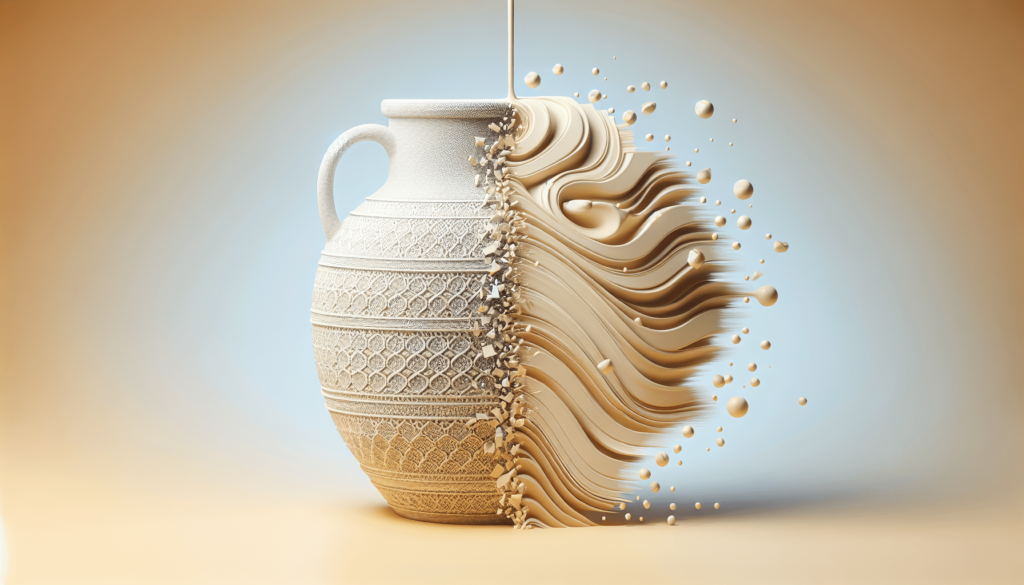
Understanding Latex Paint
What is latex paint?
Latex paint, also known as acrylic paint, is a water-based paint that contains acrylic resin as its main binder. It is commonly used for interior and exterior house painting due to its ease of use, quick drying time, and durability. Latex paint is composed of pigments, binders, and water, which gives it a smooth and easy-to-apply consistency.
Advantages of using latex paint
There are several advantages to using latex paint over other types of paint. Firstly, latex paint has a low level of toxicity, making it safe to use in indoor spaces. It emits fewer volatile organic compounds (VOCs) than oil-based paints, which can be harmful to both human health and the environment. Latex paint also has a quick drying time, allowing for faster completion of painting projects. Furthermore, it has excellent color retention and durability, making it resistant to cracking, peeling, and fading.
Common uses of latex paint
Latex paint is widely used for various applications, including interior and exterior walls, ceilings, trim, doors, and furniture. Its versatility allows it to be applied on various surfaces such as wood, concrete, drywall, and metal. The wide range of colors and finishes available in latex paint make it suitable for both decorative and protective purposes. Whether it is for residential or commercial projects, latex paint is a popular choice due to its ease of application and long-lasting results.
Decorative Chips: An Overview
What are decorative chips?
Decorative chips, also known as paint flakes or flecks, are small decorative elements that can be added to latex paint to create a unique textured finish. These chips are typically made of colored acrylic or vinyl resin and come in various shapes and sizes. They are available in a wide range of colors, allowing for endless design possibilities.
Types of decorative chips
There are several types of decorative chips available on the market. Standard chips are uniform in shape and size, providing a consistent appearance when mixed with paint. Random chips, on the other hand, vary in size and shape, creating a more organic and textured finish. The choice of chip type depends on the desired aesthetic effect and the personal preference of the user.
Applications of decorative chips
Decorative chips can be used in a variety of applications to add visual interest and texture to painted surfaces. They are commonly used in residential and commercial settings, such as garages, workshops, basements, and retail spaces. Decorative chips can be applied to floors, walls, and other surfaces to create a decorative and durable finish. They are particularly popular for creating a speckled or terrazzo-like appearance.
Benefits of using decorative chips
Using decorative chips in latex paint offers several benefits. Firstly, they provide a unique and customized look to painted surfaces, allowing for creative expression and individual style. Decorative chips also enhance the durability of the paint, making it more resistant to wear, abrasion, and chemicals. Additionally, they can help to camouflage imperfections and hide dirt or stains, providing a low-maintenance and attractive finish. Adding decorative chips to latex paint can transform a plain surface into a visually appealing and long-lasting masterpiece.
Considerations Before Adding Decorative Chips
Compatibility with latex paint
Before adding decorative chips to latex paint, it is important to ensure compatibility between the two materials. Not all chips are suitable for use with latex paint, as some may not bond properly or may affect the drying and curing process. It is recommended to choose chips specifically designed for use with latex paint to ensure optimal results.
Paint finish and texture
The desired finish and texture of the painted surface should also be considered before adding decorative chips. Different chip sizes and densities can create varying levels of texture and visual appeal. For a more subtle effect, small chips can be used, whereas larger chips will create a bolder and more pronounced texture. The chosen chips should align with the desired aesthetic outcome and complement the overall design of the space.
Adhesion and durability
The adhesion and durability of the decorative chips should be assessed to ensure a long-lasting finish. It is important to select chips that are resistant to chipping, peeling, and cracking, as well as those that offer good adhesion to the paint and the underlying surface. Good adhesion ensures that the chips remain securely attached and do not become dislodged over time.
Personal preference and style
Personal preference and style play a significant role in the selection of decorative chips. The chosen chips should align with the overall theme and design aesthetic of the space. Factors such as color scheme, pattern, and texture should be taken into consideration. It is recommended to experiment with different chip combinations and consult color charts or design professionals to determine the best choice for achieving the desired visual effect.
Preparing the Latex Paint
Choosing the right type of latex paint
Before adding decorative chips, it is crucial to choose the right type of latex paint. Consider the application, surface type, and desired finish when selecting the paint. For example, if the painted surface is subject to high foot traffic or potential spills, it is advisable to choose a latex paint specifically formulated for durability and easy maintenance.
Proper paint mixing
To ensure even distribution of the chips throughout the paint, proper mixing is essential. Follow the manufacturer’s instructions on the paint can to achieve the recommended consistency. Use a clean stirring stick or paint mixer attachment on a power drill to blend the latex paint thoroughly. Mixing the paint well will help prevent clumps or uneven distribution of the chips.
Priming the surface
Before applying the latex paint with decorative chips, it is recommended to prime the surface. Priming prepares the surface by creating a smooth and uniform base for the paint to adhere to. It also helps to improve the coverage and adhesion of the paint, ensuring better results. Choose a primer that is compatible with the latex paint and the surface material for optimal performance.
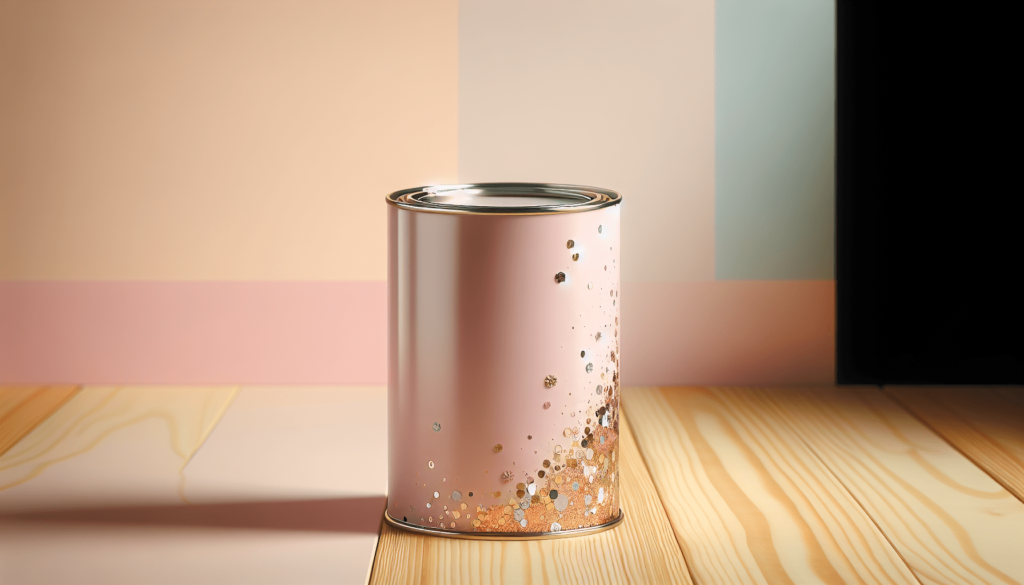
Adding Decorative Chips to Latex Paint
Surface preparation
Prior to adding decorative chips, the surface should be properly prepared. Clean the surface thoroughly by removing any dirt, dust, or debris. Repair any cracks, holes, or imperfections in the surface using a suitable filler or patching compound. Sand the surface lightly to ensure a smooth and even base for the paint and chips.
Deciding on the amount of chips
The amount of decorative chips to add to the latex paint depends on personal preference and the desired aesthetic effect. The general recommendation is to add about 8-16 ounces of chips per gallon of paint, but this can be adjusted based on desired density and texture. It is advisable to start with a smaller amount and gradually increase until the desired look is achieved.
Selecting the right size and color chips
The selection of chip size and color is crucial for achieving the desired visual effect. Consider the size of the chips relative to the surface area being painted. Smaller chips may be more suitable for smaller or detailed surfaces, while larger chips can create a striking effect on larger areas. Additionally, choose chip colors that complement the base paint color and overall color scheme of the space.
Mixing chips with latex paint
To mix the chips with the latex paint, pour the desired amount of chips into a clean container. Slowly add the latex paint while stirring continuously. Make sure the chips are evenly distributed throughout the paint by stirring in a circular motion. Take care to avoid vigorous stirring, as it can break the chips and affect the desired texture.
Application techniques
There are various application techniques that can be used to achieve different effects with decorative chips. Some common techniques include rolling, spraying, brushing, and using a trowel or spatula. The chosen technique depends on the desired texture, coverage, and personal preference. It is recommended to practice the chosen technique on a small test area before applying it to the entire surface.
Techniques for Applying Decorative Chips
Rolling the chips
Rolling the chips onto the painted surface is a popular and effective technique. Use a paint roller with a medium nap to apply the latex paint evenly. After applying the paint, sprinkle the chips onto the wet surface in a random or patterned manner. Roll over the chips lightly with the roller to press them into the paint. Allow the painted surface to dry completely before applying any additional coats or sealers.
Spraying the chips
Spraying the chips onto the painted surface is another option for application. Use a paint sprayer with a nozzle suitable for the chip size and density desired. Apply an even coat of latex paint using the sprayer, ensuring the chips are evenly distributed. This technique can provide a more uniform and textured appearance. Be cautious of overspray and take appropriate measures to protect surrounding surfaces and objects.
Brushing the chips
For more precise and controlled application, brushing the chips onto the painted surface can be a suitable technique. Use a large brush with soft bristles to apply the chips directly onto the wet paint. Lightly press the chips into the paint using the brush, ensuring even distribution. This technique is ideal for smaller areas or detailed designs where additional precision is required.
Using a trowel or spatula
Using a trowel or spatula is a technique that allows for a highly textured and artistic finish. Apply the latex paint to the surface using the trowel or spatula, creating a thick and textured layer. Sprinkle the decorative chips onto the wet paint and press them into the surface with the trowel or spatula. This technique offers more control over chip placement and can create a unique three-dimensional effect.
Drying and Curing Process
Drying time
The drying time of latex paint with decorative chips varies depending on factors such as temperature, humidity, and the thickness of the applied paint. On average, latex paint can take anywhere from 2 to 4 hours to dry to the touch. However, it is important to note that the drying time may be longer when decorative chips are added, as the additional texture can affect the drying process.
Curing time
While latex paint may be dry to the touch within a few hours, it takes longer to fully cure. Curing refers to the process of the paint reaching its maximum hardness and durability. Latex paint typically takes around 7 to 30 days to fully cure, depending on environmental conditions. It is important to allow the paint to cure completely before subjecting it to heavy traffic or cleaning.
Factors affecting drying and curing
Several factors can affect the drying and curing process of latex paint with decorative chips. Temperature and humidity levels play a significant role, as high levels of humidity or extreme temperatures can prolong drying and curing times. Additionally, the thickness of the paint layer and the number of coats applied can also impact the drying and curing process. It is advisable to follow the manufacturer’s instructions and allow ample time for proper drying and curing.
Importance of proper drying and curing
Proper drying and curing of latex paint with decorative chips are crucial for achieving a durable and long-lasting finish. Rushing the process or applying additional coats before the paint has fully dried can result in poor adhesion, cracking, or peeling. Additionally, premature traffic or cleaning of the painted surface can compromise the integrity of the finish. Patience and adherence to proper drying and curing times are essential to ensure the longevity and performance of the painted surface.
Sealing and Finishing
Applying clear sealer
To enhance the durability and longevity of latex paint with decorative chips, it is recommended to apply a clear sealer. A clear sealer acts as a protective layer, providing added resistance to abrasion, chemicals, and UV damage. It also helps to enhance the shine and color of the chips, creating a more vibrant and eye-catching finish. Follow the manufacturer’s instructions for proper application and drying times.
Enhancing the chip effect
For those who desire a more pronounced chip effect, additional steps can be taken to enhance the appearance. After applying the clear sealer, lightly sand the surface to expose more of the decorative chips. This technique can create a deeper and more textured appearance, allowing the chips to stand out. Take care not to oversand or damage the underlying paint layers.
Choosing the right finish
When selecting the finish for latex paint with decorative chips, consider both aesthetics and function. Different finishes, such as matte, satin, or semi-gloss, offer varying levels of sheen and reflectivity. The choice of finish should complement the overall design aesthetic and meet the desired performance requirements. Matte or satin finishes are commonly preferred for residential applications, as they provide a more subtle and elegant look.
Maintaining the painted surface
Proper maintenance of the painted surface is essential to preserve its appearance and durability. Regular cleaning using mild soap and water can help remove dirt, dust, or stains. Avoid harsh cleaners or abrasive scrubbing, as these may damage the painted surface or chip the decorative chips. It is also recommended to periodically inspect the painted surface for any signs of wear or damage and address them promptly to maintain the longevity of the finish.
Cleaning Up
Removing excess chips
After completing the application of latex paint with decorative chips, it is important to remove any excess chips from the surrounding areas. Use a soft brush or vacuum with a brush attachment to gently sweep or suction away loose chips. This step helps ensure a clean and polished final result, preventing loose chips from becoming trapped in the sealer or causing a rough surface texture.
Proper disposal of waste
When disposing of waste generated from the use of decorative chips with latex paint, it is important to follow local regulations and guidelines. Empty chip containers, used brushes, and other associated materials should be disposed of in accordance with local waste management regulations. If applicable, separate chips from any excess paint before disposal to minimize environmental impact.
Cleaning tools and equipment
To maintain the longevity of tools and equipment used during the application of latex paint with decorative chips, proper cleaning is essential. After use, clean paintbrushes, rollers, and other tools with warm, soapy water. Rinse them thoroughly and allow them to air dry before storing. Remove any dried paint or chips from the tools to prevent them from affecting future projects. Proper cleaning and storage of tools ensure their effectiveness and longevity.
Considerations and Limitations of Using Decorative Chips
Effect on paint durability
While decorative chips can enhance the durability of latex paint, it is important to note that the overall durability can still be influenced by other factors. The adhesion of the paint to the surface, the quality of the chips, and the overall maintenance of the painted surface all play a role in the long-term durability. Proper surface preparation, the use of high-quality materials, and regular maintenance are vital for ensuring the longevity of the finished product.
Cleaning and maintenance challenges
The addition of decorative chips can introduce challenges in cleaning and maintenance. The textured surface created by the chips may require more effort and specialized cleaning techniques compared to a smooth painted surface. Debris and dirt can become trapped within the chips, requiring more thorough cleaning to maintain the desired appearance. Regular and gentle cleaning practices are key to keeping a decorative chip-surfaces looking their best.
Compatibility with different surfaces
Decorative chips are compatible with a wide range of surfaces, including wood, concrete, drywall, and metal. However, it is important to ensure proper surface preparation and compatibility with the specific material before applying latex paint with decorative chips. Some surfaces may require additional priming or preparation steps to ensure proper adhesion and longevity of the finish. It is advisable to consult with professionals or conduct thorough research on the specific surface requirements before proceeding with the application.
Potential color variations
When using decorative chips, there is a possibility of color variations or inconsistencies. This can occur due to variations in chip manufacturing or variations in the dispersion of color within the chips themselves. While efforts are made to ensure consistency, it is advisable to mix and test a small batch of chips and paint before applying to the entire surface. This allows for adjustments and ensures a cohesive and desired color appearance.
In conclusion, adding decorative chips to latex paint can create a unique and visually appealing finish for various surfaces. By understanding the properties of latex paint, the different types of decorative chips available, and the necessary considerations for successful application, one can achieve stunning and durable results. It is important to take into account factors such as compatibility, surface preparation, and drying/curing times to ensure optimal performance. With the proper techniques, sealants, and maintenance practices, a latex paint finish with decorative chips can transform any space into a work of art.

